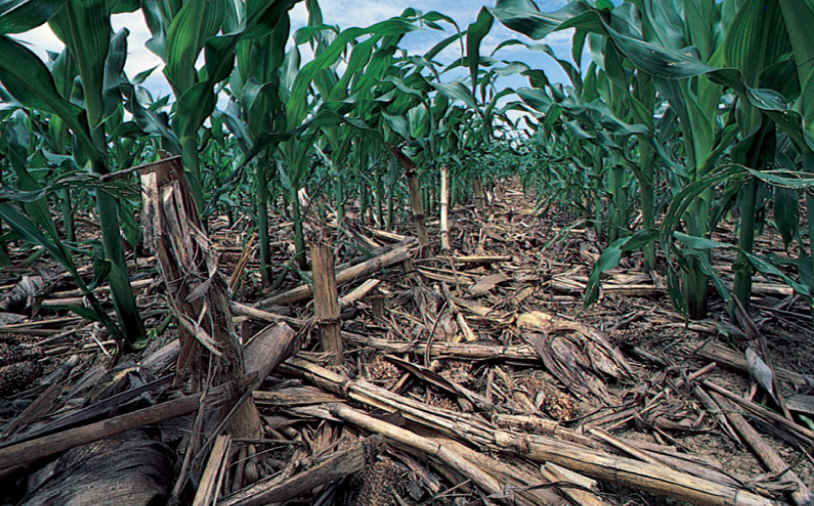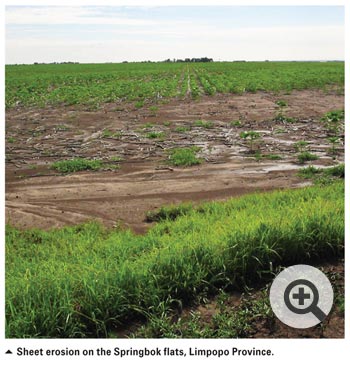Bringing Cleared Land into Agricultural Production
By John Deibel, Freelance Author and Agronomist
As the adoption of new Agricultural technologies evolve in the countries of sub-tropic regions around the world, the clearing of land once occupied by forests, fringe mixed stands, non-agricultural brush land, and other non-agricultural areas is continually increasing. In the past, we did not know what we know today about Sustainable systems whereby any human activity, no matter where it is carried out, needs to be cognizant of the fact that it will affect the long term ecology and environment on which we as humans rely. The degree to which we impact our earth, we are learning, is far more direct than we once thought.
The ‘good news’ is that Sustainable Agriculture practices have responded to these concerns over the past several decades and a new approach to farming is evolving along with it…working in concert with the soil, ecology, environment, and climate is, and will continue to reap benefits in the long run.
My focus on this article relates to how we can effectively take land we are clearing, whether by slash and burn, or bulldozers and graders, or any other means; and do so in a manner that can sustain a viable agriculture while preserving the amazing soil resource that has taken millions of years to develop.
One of the main causes for soil erosion in the areas I’m referring to is due to the abandonment of land that is no longer producing crops at a profitable level. To understand why this happens, we must first step back to how these soils sustained themselves before they met the bulldozer. In many of the tropics, the soils are deep, older soils, and heavily weathered over the years. In a previous article for Tractor Export (see: Improved Management of Soils Making Huge Strides Across the Globe) I tried to explain the basics of soil formation across the globe, and how each region has its own challenges to maintain a productive agricultural system through crop selection, rotation, managing fertility, controlling pests, and machinery use. In that article I equated the surface soil horizon as the ‘skin’ we use to produce crops around the world. Its formation took millions of years and is comprised of nutrients that are primarily there due to microbial action smaller than the eye can see, but more often than not, is removed due to human activity.
When you think of clearing land for agricultural production, consider that it took the earth millions of years to create that environment that resulted in the productive land you are clearing. With a relative sliver of patience, we can coexist with that soil environment for generations to come..and we both can thrive.
The trend to Sustainable Systems has brought a new level of technology to an area of Agronomy (crops and soils) that we have always been aware of but are now gaining new insight as to how to measure and manage it for short and long term sustainability. That area relates to SOIL BIOLOGY. These are the living creatures within the soil, most of which we cannot even see without a microscope, hence the term soil microbiology (see: Wikipedia – Soil Biology ).
Microbiological organisms take organic material that has been broken down by creatures the eye can see, and create available nutrients for the plants yet to come. Where in the past we considered the elements like Nitrogen and Phosphorus on their own, we are now considering the ‘life’ within a soil that makes them available without the assistance of chemical fertilizer.
The other consideration in preparing land for cultivation that has never seen it, is Soil Erosion. Leaving land exposed to the elements of wind, sun, and rain predisposes that land to off-site movement away from the field and into either sediment zones or in the bottom of creeks and rivers. When clearing land, the machinery and human element physically displace soil, many times just by removing it in the roots and topsoil being leveled or moved offsite…after this physical disruption, the remaining subsoil is barren and subject to further movement by natural influences, like rain events and strong winds. An important remedy to this is to prepare the land we are clearing with the following guides:
- Remove only what you must to leave a tillable surface soil
- Level and seed a series of annual cover crops that can establish quickly. This sequential process ‘resets’ the soil profile to be occupied by the new biomass.
- Establish rotations of crops and avoid monoculture. Rotate from broad-leaf plants to grass types and back again. This results in better organic matter retention in the soil, prevents disease build up and insect problems; and can contribute back to the nutrient pool for the next crop. Grow leguminous crops as much as possible (beans, peas, alfalfa, clover, others)
- Build perennial crops into the rotation if possible, preferably field seeded ones that won’t expose a lot of soil. When planting perennial fruits, bushes, trees, etc., seed down and maintain grass strips so as to prevent eroding the soil away.
- Always minimize tillage wherever you can. You’ll save fuel, retain soil moisture, and in certain regions, increase yields.
I will be writing more on this and related topics in the future. Some good sources of information include:
Soil erosion in South Africa – its nature and distribution
Agriculture in Africa – Transformation and Outlook
The Impact of Industrial Agriculture in Rainforests
How do you liked this post? Let us know in Facebook or Google+




